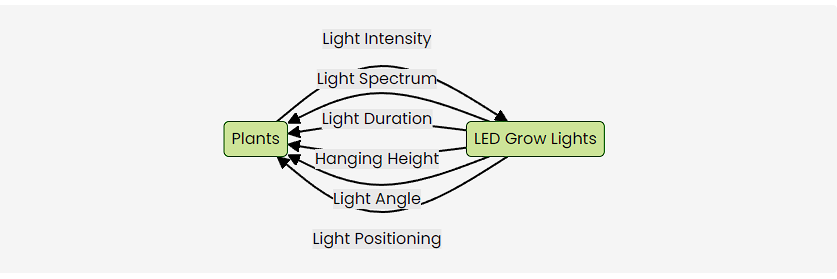In the realm of indoor gardening, the placement of LED grow lights plays a crucial role in maximizing plant growth and ensuring healthy development. Understanding the optimal positioning of these lights can significantly impact the overall success of your indoor garden. In this comprehensive guide, we delve into the intricacies of placing LED grow lights to achieve the best results for your plants.
Proper placement of LED grow lights is essential for ensuring that plants receive adequate light for photosynthesis, which is vital for their growth and development. Insufficient light can lead to stunted growth, poor flowering, and overall unhealthy plants. On the other hand, excessive light can cause stress to the plants, leading to issues such as leaf burn and reduced yields.
The intensity of light that plants receive is crucial for their growth. Different plants have varying light requirements, so it is essential to position the LED grow lights at the appropriate distance from the plants to ensure they receive the right amount of light.
LED grow lights emit different spectrums of light, including blue, red, and full-spectrum options. Understanding the light spectrum requirements of your plants is essential for optimal growth. Blue light is ideal for vegetative growth, while red light is beneficial for flowering and fruiting stages.
The duration of light exposure is another critical factor to consider when placing LED grow lights. Most plants require a certain number of hours of light per day for healthy growth. Ensuring that the lights are on for the correct duration is essential for the plants' overall well-being.
The height at which you hang the LED grow lights above your plants is crucial for ensuring even light distribution. As a general rule of thumb, the lights should be positioned at a height that allows for uniform coverage of the entire plant canopy.
Adjusting the angle of the LED grow lights can help ensure that light reaches all parts of the plant, including lower leaves and stems. Tilting the lights slightly can help prevent shading and promote even growth throughout the plant.
Positioning the LED grow lights directly above the plants can help maximize light absorption and promote healthy growth. Avoid placing the lights too close to the plants, as this can cause light burn, and too far away, as this can lead to insufficient light exposure.

By following these best practices and understanding the importance of proper light placement, you can optimize plant growth and ensure the success of your indoor garden. Remember to regularly monitor your plants' response to the LED grow lights and make adjustments as needed to provide them with the best possible growing conditions.
Luxgrow is developed by photology engineers and more than 13 years R & D engineers team in led lights
As a professional and rich experience grow light designer and manufacturer for indoor greenhouse farms ; Luxgrow really knows offer the exclusive customized layout service is very necessary and cost-efficient.
We offer free exclusive customized layout service for customers , not only in the lighting configuration help,but also help you know the budget